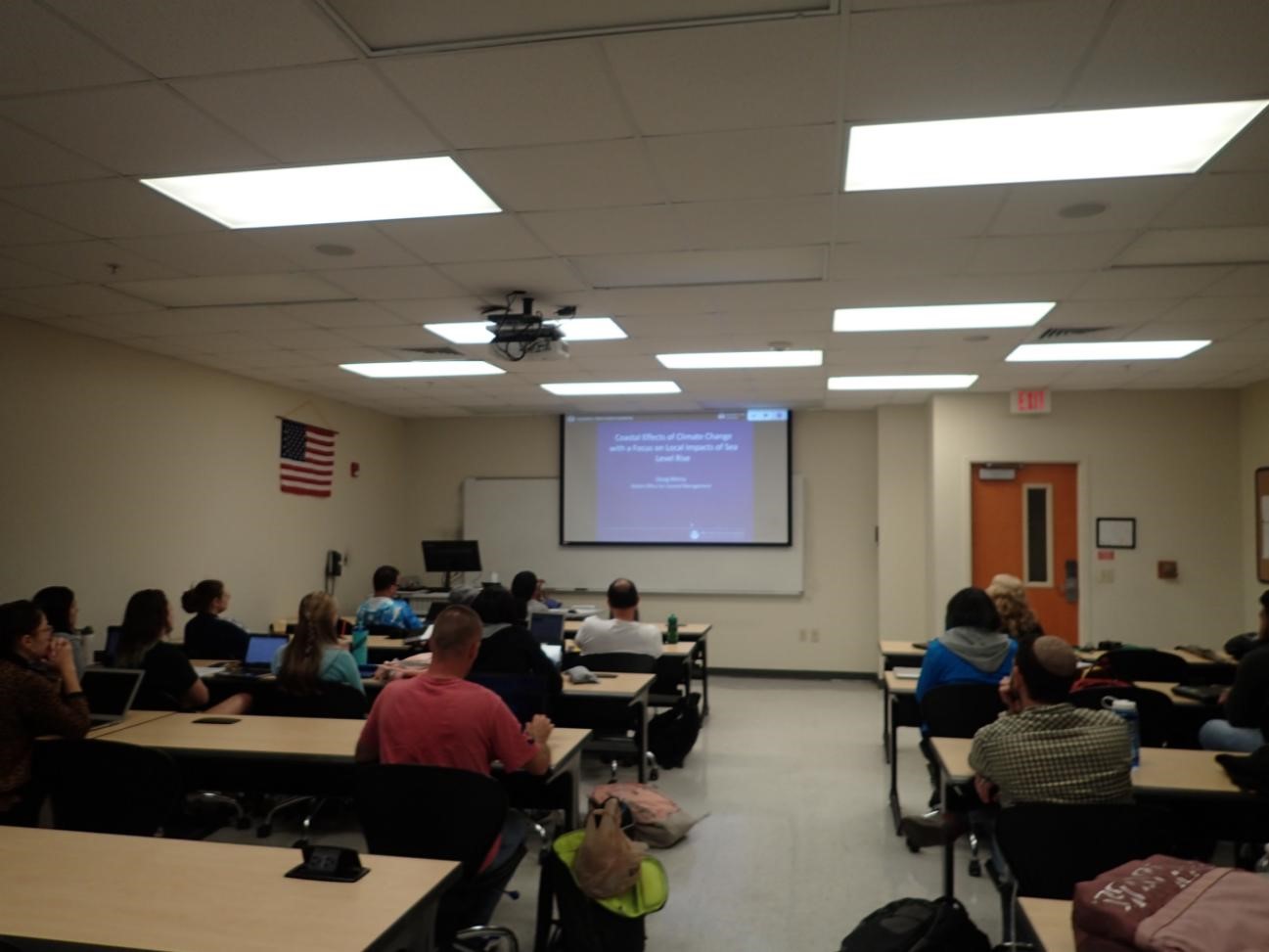Issue
With sea level rise a continuing burden and threat in the urban areas of South Florida, undergraduate students enrolled in the Global Environmental Change course at Broward College are tasked with conducting a case study analysis of sea level rise impacts. Students spend the semester working in teams to research projected sea level rise, explain impacts to highly urbanized areas from a global, regional, and local perspective, and identify adaptation strategies for communities in South Florida. Students examine the biophysical, institutional, and human dimensions aspects of the study site, including vulnerabilities.
Process
To help complete this assignment, students use the Sea Level Rise Viewer and supplemental resources within NOAA’s Digital Coast. The graphical interface of the viewer enables students to use a slider bar to visualize zero to 10 feet of sea level rise and assess impacts to communities. Students improve their understanding of the potential impacts of sea level rise using the local scenarios tab and examine social vulnerabilities in communities in South Florida. Students use the supplemental information on the website to build their case studies and develop recommendations for adaptations, resilience, and possible retreat.
Impact
Student teams improved their understanding of the causes of sea level rise and impacts to the South Florida coast. Through their case study assessments and use of the Digital Coast resources, specifically the Sea Level Rise Viewer and social vulnerability information, students realized the broader impacts to society from rising seas. Several students expanded their inquiries to more closely examine the U.S. Census Bureau maps and think more critically about the strengths and weaknesses of the data and the relationship between social and ecological changes from sea level rise. The data encouraged students to explore a deeper understanding of sea level rise beyond flooding, consider changes in infrastructure and varying levels of risk to communities, and identify adaptation strategies. At the conclusion of the semester, students presented their case studies, including recommendations and adaptation strategies, to their peers and invited guests and explored additional options and ideas through facilitated discussion. The use of the Sea Level Rise Viewer, specifically the visualization images and inundation maps, was included in the project-based learning efforts. (2020)

